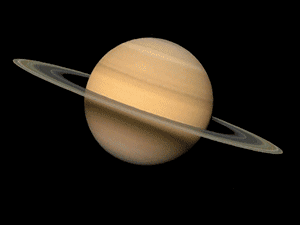Saturn: The Jewel of the Solar System
The second largest planet in our solar system, adorned with thousands of beautiful ringlets, Saturn is unique among the planets. It is not the only planet to have rings -- made of chunks of ice and rock -- but none are as spectacular or as complicated as Saturn's. Like fellow gas giant Jupiter, Saturn is a massive ball of mostly hydrogen and helium.
Surrounding by 53 confirmed and nine provisional moons, Saturn is home to some of the most fascinating landscapes in our solar system. From the jets of Enceladus to the methane lakes on smoggy Titan, the Saturn system is a rich source of scientific discovery and still holds many mysteries.

The farthest planet from Earth observable by the unaided human eye, Saturn has been known since ancient times and is named for the Roman god of agriculture and wealth. The Greek equivalent was Cronos, the father of Zeus/Jupiter.
When the solar system settled into its current layout about 4.5 billion years ago, Saturn formed when gravity pulled swirling gas and dust in to become a planet 886 million miles (1.4 billion km) from the sun. Like Jupiter, Saturn is mostly made of hydrogen and helium, the same two main components that make up the sun.